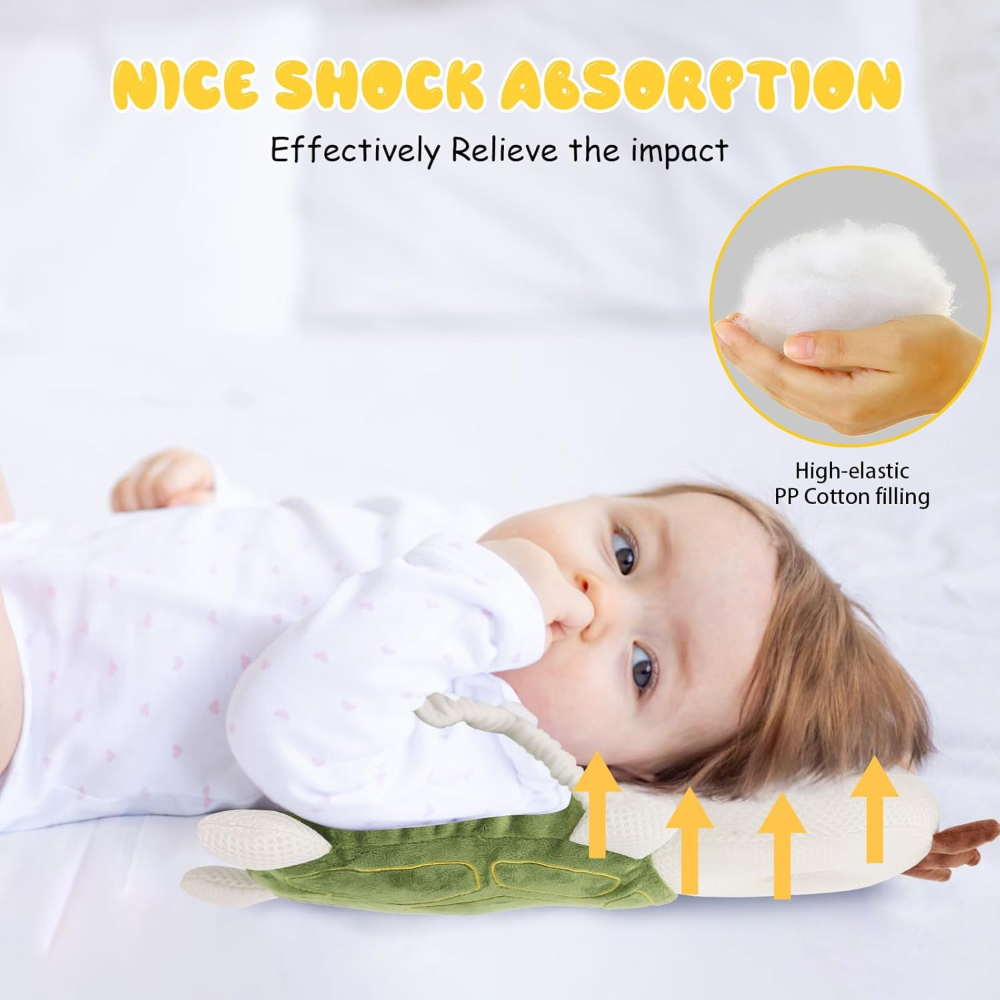Tiny hands reach, curious eyes widen. Your baby is on a mission, exploring every inch of their new world. One minute they're crawling with purpose, the next they're pulling themselves up, teetering with excitement. It’s a beautiful, messy dance of discovery. Yet, with every wobbly step and ambitious lunge comes the almost certain bump or tumble. Their innate drive to explore often outweighs their still-developing balance, leaving them vulnerable to those sudden, minor falls.
As parents, we constantly grapple with a core question: how can we give our little ones the freedom to explore safely? We want them to learn, grow, and build confidence. But we also want to shield them from every possible scrape or knock. Childproofing offers one layer of defense. Still, some bumps are just a part of the learning process.
This is where the padded backpack comes in. It’s a clever solution, a gentle shield designed to cushion those inevitable backward falls. Think of it as a soft landing pad for their precious head, offering peace of mind during those active, exploratory phases. We'll show you exactly how these innovative safety tools work to protect your baby from bumps safely.
The Science Behind the Soft Landing
Understanding Baby's Vulnerable Head
A baby’s head is not like an adult's. Their skull is still developing, with soft spots called fontanelles. These gaps allow for brain growth and make birth easier. Your little one’s head is also much larger in proportion to their body. This makes it a target when they fall backward. Plus, their neck muscles are not fully strong yet. This means their head can whip back easily, increasing injury risk.
How Padding Absorbs Impact
Padding works by understanding the physics of a fall. When your baby tumbles, their head hits the ground with a certain force. The right padding spreads this force out over a larger area. This makes the impact less sharp on any one spot. It also absorbs kinetic energy. The foam or gel materials compress and deform, taking in the energy that would otherwise go into your baby's head. Common padding often uses high-density foam or gel for this very reason.
Types of Falls and Their Potential Severity
Padded backpacks are great for certain types of falls. They help most with low-level bumps. These include tripping over their own feet while crawling. They also protect when a baby bumps into furniture legs. They are perfect for falling backward from a sitting or crawling position. However, these backpacks have limits. They are not enough for very serious falls, like a baby falling from a high chair. Always know when a padded backpack is not suitable.
Key Features of a Safe Padded Backpack
Material and Thickness Matters
The best padded backpacks use specific materials. High-density foam is a must for effective shock absorption. This type of foam compresses well to soften blows. The materials should also be breathable. This keeps your baby comfortable and prevents overheating. Look for hypoallergenic fabrics to prevent skin irritation. Ensure the padding has enough thickness for good protection. It shouldn't be so thick it becomes heavy or bulky.
Design and Fit for Maximum Coverage
A good design ensures the backpack stays put. Adjustable straps are very important for a snug fit. This means the padding stays where it needs to be. The backpack should cover the back of the head well. It also needs to protect the upper back and shoulders. A lightweight design is key. Your baby should move freely without feeling weighed down. The right fit means safety without stopping their fun.
Safety Certifications and Standards
Checking for safety certifications is a smart step. Some products might meet standards like ASTM or EN. These groups set rules for product safety. Look for manufacturers who are open about their safety testing. They should freely share this info. Always read product descriptions. See if they mention any safety certifications. This helps you choose a truly safe padded backpack.
When and How to Use a Padded Backpack
Identifying the Right Stage of Development
Babies go through many stages of movement. A padded backpack is great during the crawling stage. This is when babies start exploring on their hands and knees. It’s also useful when they begin pulling up. They use furniture to stand and move. Early walking attempts are another prime time for protection. Balance is still developing, making falls common.
Practical Scenarios Where It's Beneficial
Imagine your baby learning to crawl on hard floors. A padded backpack can prevent tears from bumps. It helps when they bump into coffee table legs too. When playing at a park, small tumbles are expected. A backpack provides a soft landing on grass or soft surfaces. If your baby is extra active, they might overbalance often. The backpack gives you peace of mind in these everyday situations.
Proper Usage for Optimal Safety
Using the backpack correctly is simple. Make sure the straps are snug but not tight. You should fit two fingers under the strap. Check that the backpack sits properly. It needs to cover the back of your baby's head. It should also protect the upper back. Remember, this backpack is a safety aid. It does not replace watching your baby closely. Active supervision is always important for their safety.
Expert Insights and Parent Testimonials
Pediatricians' Perspectives on Protective Gear
Pediatricians often suggest creating a safe play space. Organizations like the American Academy of Pediatrics give advice on fall prevention. They stress babyproofing your home. While padded backpacks are not a substitute for this, they can add an extra layer of protection. Many doctors agree that products like these can help prevent minor head injuries. They are part of a larger plan for baby safety.
Real Parent Experiences
Parents often share positive stories. "It gave me real peace of mind," one mom said. "My little one was learning to cruise along the coffee table, and I worried less." Another parent mentioned, "We used it a lot in the living room. It made those backward tumbles much less scary." These backpacks help parents feel more at ease. They know their baby has a little extra cushion during playtime.
What to Consider Beyond the Backpack
A padded backpack is one part of baby safety. Childproofing your home remains most important. Always supervise your baby closely. Never leave them alone, even for a moment. Learn to read your baby’s cues. They might be tired or upset. Knowing this can help prevent falls before they happen. Combine the backpack with these steps for the best safety.
3 of the Top Padded Backpacks for Babies Available on Amazon
We hope you find your next awesome thing from the list below! Each product was independently selected by our editors. Some may have been sent as samples for us to fiddle with, but all opinions in this article are our own. Oh, and FYI — AnnesAnalytics may collect a share of sales or other compensation from the links on this page if you decide to buy something (that's how we stay in business). Reviews have been edited for length and clarity. Enjoy finding your next awesome thing.
Why We Love This
Feel how soft this headrest is. The crystal velvet fabric feels great. Inside, it is packed with comfy, bouncy PP cotton. This keeps your little one safe. It helps prevent head injuries. The pillow offers both comfort and solid protection.
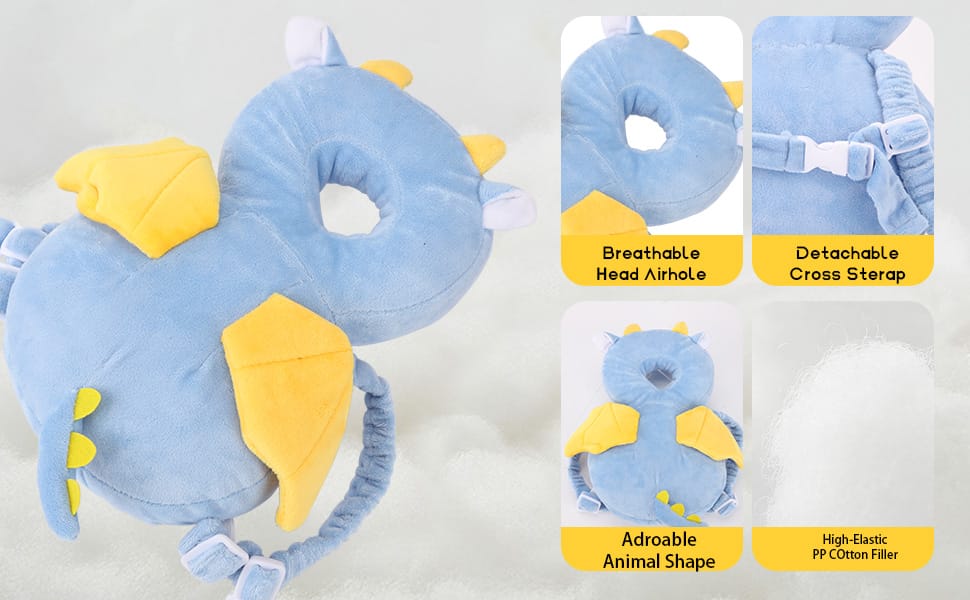
Encouraging Review
"Definitely recommend. Has saved my baby several times from hitting her head, and not to mention, it is super cute." Amazon Review by Jade
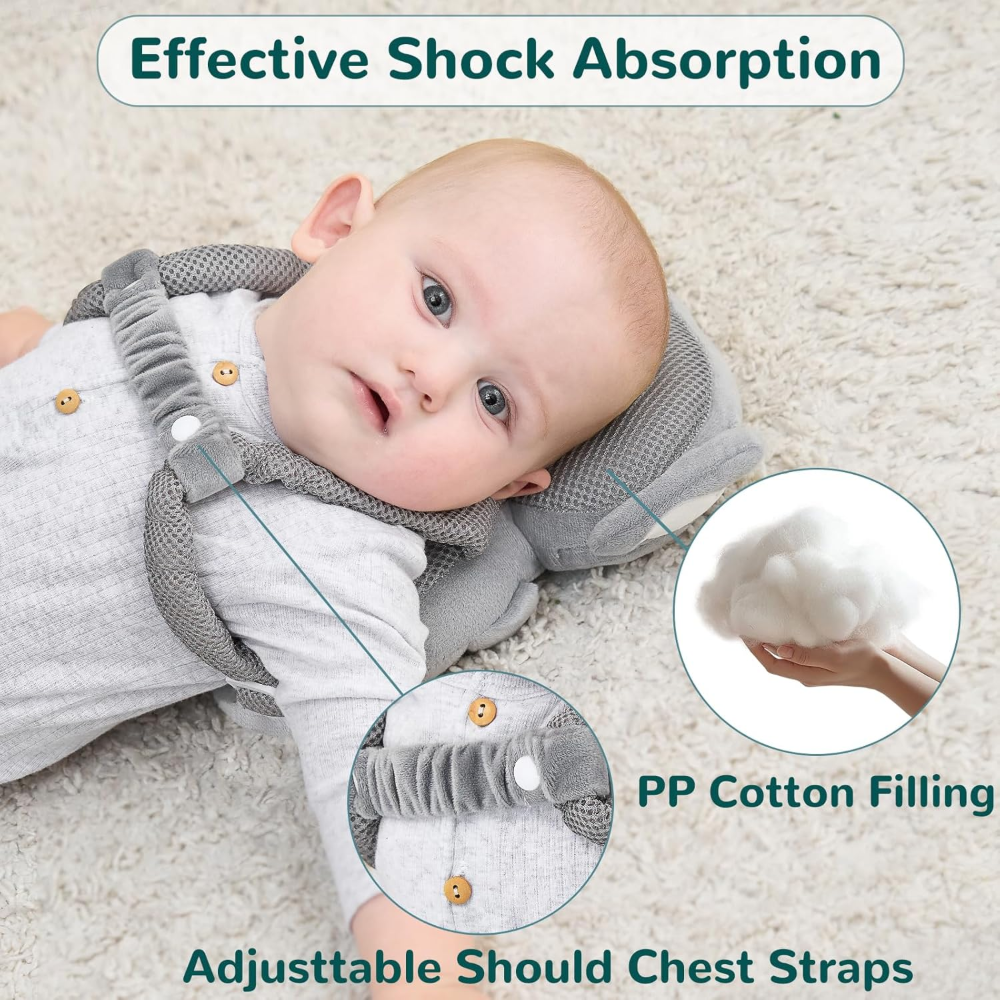
Baby Head Protector Backpack for Falling, Crawling and Walking
For 0.5-2 Years
Why We Love This
Your baby's comfort comes first. This cute headrest feels super soft. It breathes well with its crystal velvet fabric. Inside, cloud-like PP cotton offers gentle support. It keeps sensitive skin happy. This design won't cause allergies. Safety matters most for your child. It protects your baby's head and back. The design cuts impact by half. Fewer bumps mean more happy days ahead.

Encouraging Review
"Great buy! My son is learning to walk and this has been a life saver in terms of protecting his little head when he tumbles or trips! 100% mom approved!" Amazon Review by Rena Escobar
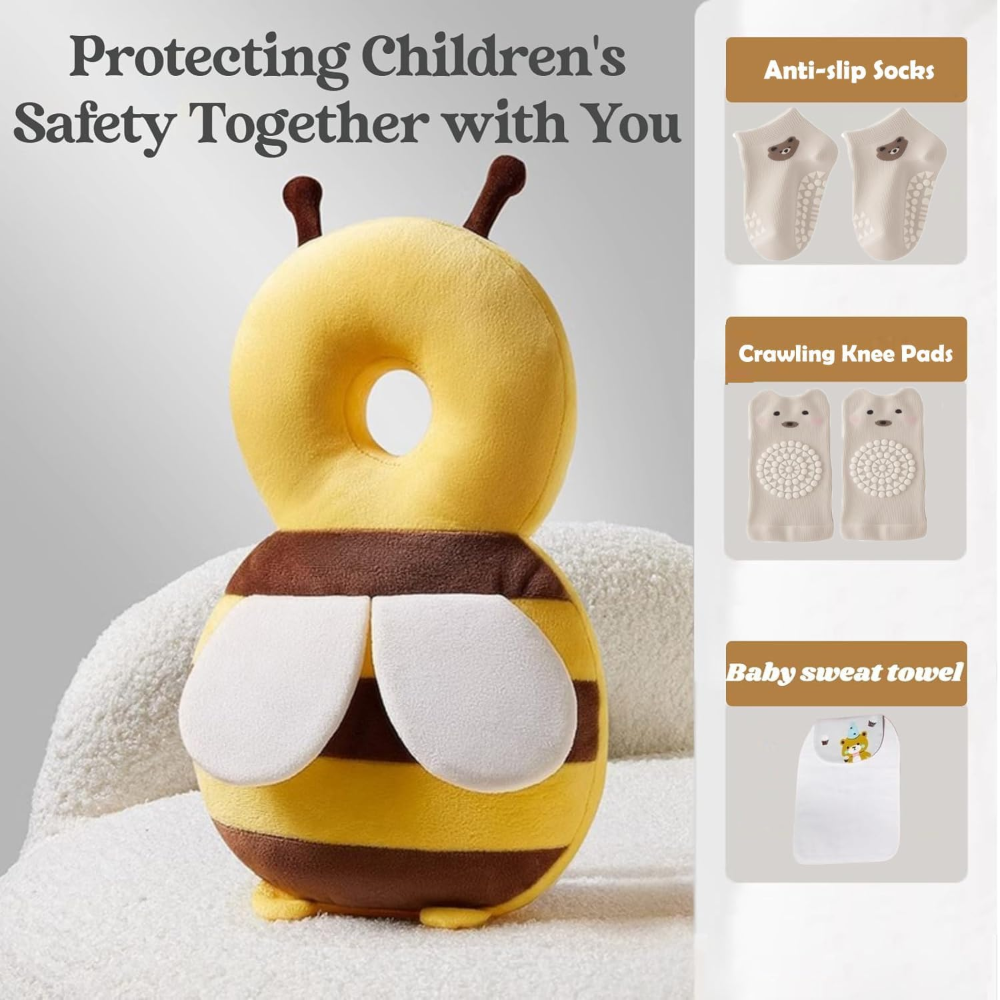
Baby Head Protector Backpack
Backpack with Baby Knee Pads Alarm Function for Walking & Crawling
Why We Love This
Your baby's safety comes first. This head protection backpack uses strong, thick 3D cotton. It handles big bumps easily. The material springs back fast after pressure. Its surface feels soft on baby's skin. No irritation or harm will happen. Trust this quality material to protect your little one.
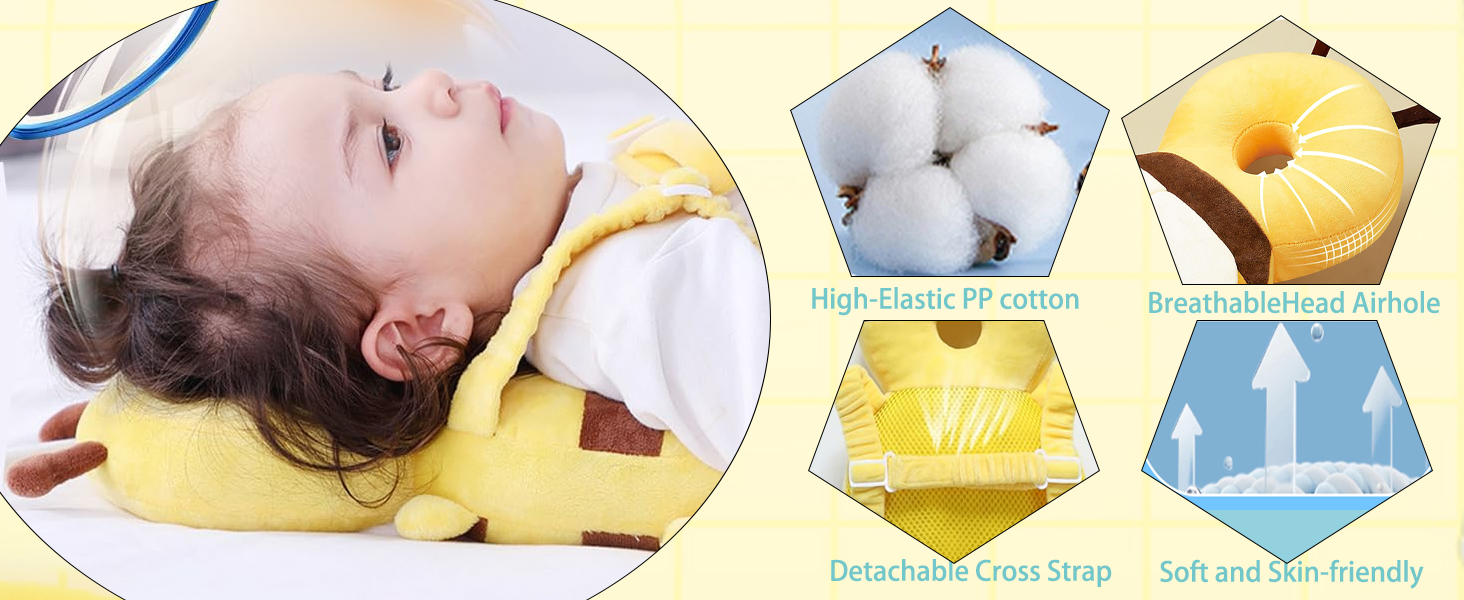
Encouraging Review
"Great product. It really saved my baby from bumping her head and back while she was learning to stand. Would definitely recommend to other parents." Amazon Review by Priscilla D.
Conclusion
Padded backpacks are smart tools. They shield babies from minor bumps and falls. These happen often during early development. The right backpack has quality materials and a good design. It should fit well to give the best protection. While very helpful, these backpacks are not a magic fix. They work best as an extra layer of safety. Always combine them with active supervision and a childproofed home.
Parents can choose these products with confidence. Think about your child's stage and your home's setup. Giving your baby freedom to explore while keeping them safe brings great peace of mind.
Frequently Asked Questions
What makes a padded backpack safe for my baby?
Padded backpacks have soft cushioning. This padding absorbs shock from bumps. It protects your baby's head and body from hard impacts.
How much padding is enough for protection?
Look for thick, dense foam. The padding should cover the back and sides. It should feel firm but yield to pressure.
Can these backpacks prevent all injuries?
No, they reduce injury risk. They are not a substitute for careful handling. Always watch your baby and avoid dangerous situations.
Are padded backpacks suitable for newborns?
Many padded backpacks are not for newborns. Check the age and weight limits. Ensure the backpack supports your baby's head and neck properly.
How do I clean a padded baby backpack?
Most have removable covers. Spot clean with mild soap and water. Always check the care label for specific instructions.


